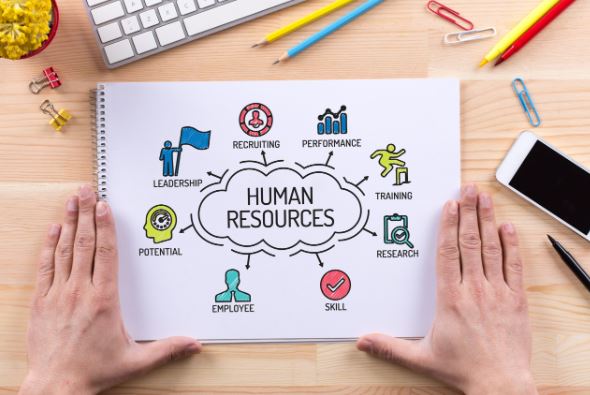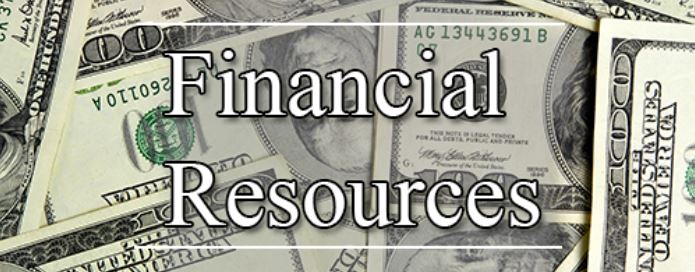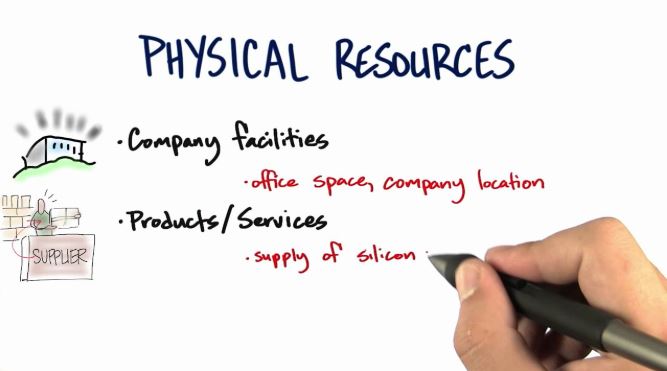Introduction
Every business begins with an idea—but it’s the resources behind that idea that determine whether it thrives or fizzles out. What are the three types of resources in entrepreneurship? They are the backbone of any successful venture: human, financial, and physical resources. These core elements work together to help entrepreneurs build, manage, and grow their businesses effectively. Without the right people, funding, or tools in place, even the best ideas can stall. Whether you’re launching a wellness brand, scaling a coaching service, or running a digital product business, understanding these resources is key. Each one plays a unique role—from enabling daily operations to driving long-term strategy. And when combined intentionally, they fuel resilience, sustainability, and smart decision-making. In this guide, we’ll break down these three resource types, explain why they matter, and show how to leverage them for entrepreneurial success.
Table of Contents
Why Resources Are the Foundation of Every Business
Every successful business—whether it’s a global brand or a solo wellness startup—relies on one thing at its core: resources. Think of resources as the fuel, tools, and support systems that make your business run. Without them, even the most brilliant ideas can remain stuck in the planning phase.

Entrepreneurs often focus on strategy, branding, and marketing—and while those are important, none of them can function without the right resources in place.
1. Resources Turn Ideas into Action
Having a great idea is just the beginning. It’s the people, money, tools, and time that turn that idea into something real. For example, if you’re building a mental wellness platform, you’ll need:
- Human resources like therapists, writers, or coaches to create content
- Financial resources to pay for tools, marketing, or staff
- Digital resources like a website, email list, and social media tools
Without these, your business stays an idea—not a solution.
2. Resources Keep Your Business Sustainable
Entrepreneurship isn’t just about launching—it’s about staying in the game. Resources help you stay consistent and stable, even when things get tough. If you have systems and support in place, you’re more likely to bounce back from challenges without burning out.
For example:
- A support network (human resource) can help you stay motivated.
- Emergency funds (financial resource) can keep you afloat during slow months.
- Automation tools (digital resource) can save time and reduce stress.
3. Resources Let You Focus on What Matters Most
As a mental health and wellness entrepreneur, your impact depends on the quality of care and value you provide. When you have the right resources in place, you’re free to focus on your zone of genius—whether it’s coaching, content creation, or product development—rather than spending all your time troubleshooting tech issues or managing admin tasks.
In other words, resources help you work on your business, not just in it.
The 3 Types of Resources in Entrepreneurship
Understanding the different types of resources is essential for any entrepreneur—especially those in wellness and mental health. Whether you’re launching a coaching program, building a wellness blog, or creating a mindfulness app, you’ll need a combination of key resources to bring your vision to life.
So, what exactly are these resources? In entrepreneurship, they’re commonly broken down into three main categories: human, financial, and physical (or material) resources.
Each type plays a unique role in helping you start, manage, and grow your business.
1. Human Resources – The People Behind the Purpose
Definition:
Human resources refer to the people who contribute their skills, expertise, time, and creativity to help you build your business.

This doesn’t only include full-time employees. It can also be freelancers, virtual assistants, business partners, advisors, mentors, and even YOU as the founder.
Why It Matters for Wellness Entrepreneurs:
In the mental health space, human connection is everything. Whether it’s hiring licensed professionals for a counseling platform or partnering with content creators to develop educational blogs and podcasts, having the right people on your team ensures credibility and impact.
Examples:
- A certified therapist writing blog content for your site
- A freelance SEO expert helping you rank on Google
- A mentor guiding your affiliate marketing strategy
- A virtual assistant managing your emails or scheduling
Pro Tip:
As a solopreneur, your own well-being is one of your most important human resources. Burnout in the wellness space is real—so take care of your mental and emotional energy like you would any other asset.
2. Financial Resources – The Fuel That Keeps You Running
Definition:
Financial resources include the money you need to operate your business—whether that’s for startup costs, daily operations, or growth investments.

Why It Matters for Wellness Entrepreneurs:
Even if you’re starting small, every business needs money to run. Financial resources help you invest in tools, pay collaborators, run ads, and scale your reach. Without proper financial planning, even the most passionate wellness brand can stall before it gains momentum.
Examples:
- Personal savings or capital to get started
- Affiliate earnings or client payments as revenue
- Business loans or crowdfunding
- Earnings from Google AdSense or sponsored content
How to Optimize It:
- Start lean: Use free or low-cost tools in the beginning (e.g., MailerLite for email marketing, Canva for design).
- Track everything: Use a simple budgeting app or spreadsheet to monitor your cash flow.
- Diversify income: Mix affiliate marketing, ads, digital products, and services for stability.
3. Physical (or Material) Resources – The Tools and Tech You Need
Definition:
Physical resources are the tangible and digital tools or infrastructure that support your operations. While traditionally this might mean office space or equipment, for online entrepreneurs, it often includes digital platforms and tools.

Why It Matters for Wellness Entrepreneurs:
Having the right tools can drastically improve your efficiency, professionalism, and scalability. Whether it’s a meditation app, a client management system, or a podcast microphone, these resources help you deliver real value to your audience.
Examples:
- A website or blog platform (like WordPress)
- Scheduling software for coaching sessions (like Calendly)
- Audio/video equipment for content creation
- Wellness product inventory (if you sell physical goods)
- Online course platforms (like Teachable or Thinkific)
Bringing It All Together: Why These Resources Work Best Together
Entrepreneurship isn’t about mastering just one area—it’s about knowing how different elements of your business support each other. That’s exactly how human, financial, and physical resources function: individually important, but exponentially more powerful when combined.
Each type of resource fills a gap that the others can’t. When you align them intentionally, they create a well-rounded business system that supports both short-term progress and long-term sustainability.
1. Human + Financial = Growth Power
Let’s say you have an amazing virtual assistant (human resource) ready to take over your social media management. That’s great—but if you don’t have the financial resources to consistently pay them, it won’t be a sustainable setup.
On the flip side, having money without the right people to help execute your vision can lead to wasted investments or burnout from trying to do it all yourself.
Together, these two resources allow you to grow smart—delegating tasks, freeing up your time, and increasing productivity.
2. Human + Physical = Efficiency & Execution
Now imagine you’ve hired a great content creator (human), but they don’t have the tools (physical) to deliver high-quality work—like access to a blog CMS, graphics tools, or a scheduling platform. Their output may suffer, even if their talent is top-notch.
By pairing your team’s strengths with the right tools, you create a streamlined system that allows your ideas to come to life faster and more efficiently. For example:
- A coach + Zoom + calendar scheduler = seamless session delivery.
- A copywriter + SEO tools + WordPress = optimized blog content that drives traffic.
3. Financial + Physical = Automation & Scale
Many solo entrepreneurs start out doing everything manually. But with enough financial resources, you can invest in physical resources like automation tools, software, and better equipment—all of which help you scale without sacrificing your health or quality.
For example:
- Email marketing tools (physical) become much easier to afford with steady affiliate income (financial).
- High-quality podcast gear or recording software helps elevate your brand once you have the budget to invest in it.
How to Maximize the Resources You Already Have
You don’t always need more resources—you often need to get more from the ones you already have. Whether you’re bootstrapping or growing steadily, learning how to stretch and optimize your current assets can lead to surprising results.
Practical Ways to Maximize Resources:
- Leverage human capital: Tap into your network—friends, mentors, or communities who can offer advice or collaborate with you.
- Use free/low-cost tools: Platforms like Trello, Google Workspace, Canva, and MailerLite can help you operate efficiently without a big budget.
- Repurpose content and assets: Turn one blog post into a newsletter, social media carousel, and a podcast episode. Stretching your content increases reach without extra cost.
Maximizing what you already have means building smarter—not harder—and preserving your energy for the areas that matter most.
The Big Picture: Balance Fuels Your Business
It’s not about having the most money, the biggest team, or the fanciest tools. It’s about balancing your resources so they work in harmony.
As a wellness-focused entrepreneur, this matters even more—because you’re not just building a business; you’re building something that supports people’s lives. To do that well, your own foundation must be strong, and that foundation is made of the resources you build, manage, and optimize over time.
Ask Yourself:
- Am I investing in the right people to help me grow?
- Do I have the tools I need to do my best work?
- Is my financial plan supporting my goals—or holding me back?
When your human, financial, and physical resources are aligned, you unlock momentum—and from there, anything is possible.
How to Identify Resource Gaps in Your Entrepreneurial Journey
Even with passion and purpose, many entrepreneurs hit roadblocks because they don’t realize what resources they’re missing. Resource gaps—whether it’s lacking the right skills, budget, or tools—can quietly slow down your progress or lead to burnout over time.
Common Signs of Resource Gaps:
- You’re constantly overwhelmed with tasks (lack of human support)
- You hesitate to invest in tools or marketing (limited financial flexibility)
- Your content or services lack consistency or polish (missing physical tools)
How to Fix It:
- Do a resource audit: Make a list of what you already have vs. what you need in human, financial, and physical categories.
- Prioritize high-impact gaps: Not all gaps need to be filled at once—focus on the ones holding you back the most.
- Start small: Can’t afford a team? Hire a freelancer for a few hours per week. Don’t have a big ad budget? Start with organic marketing.
Being aware of your resource gaps is the first step toward building a stronger, more sustainable business.
Final Thoughts: Building a Resilient Business Begins With the Right Resources
Every successful business, whether in tech, fashion, or wellness, relies on a solid foundation—and that foundation is built on resources. Understanding the three core types of resources in entrepreneurship—human, financial, and physical—gives you a clear blueprint for launching, sustaining, and scaling your venture. When used in isolation, these resources are helpful. But when strategically combined, they become powerful drivers of growth, resilience, and long-term success. Especially in the mental health and wellness space, where your work touches lives on a deeper level, having the right support systems in place helps you serve your audience better without sacrificing your own well-being.
Key Takeaways:
- Human resources bring expertise, creativity, and support.
- Financial resources fuel operations, tools, and growth.
- Physical (material/digital) resources make execution efficient and professional.
The more intentional you are in balancing these three elements, the more sustainable and impactful your business becomes.
FAQ
Question1. What are the 3 types of resources in entrepreneurship?
Answer. Human, financial, and physical resources—they support people, funding, and tools needed to run a business.
Question2. Why are these resources important?
Answer. They help entrepreneurs operate efficiently, adapt to challenges, and grow sustainably.
Question3. Can a business work with just one resource type?
Answer. Not for long. Long-term success usually requires a balance of all three working together.


